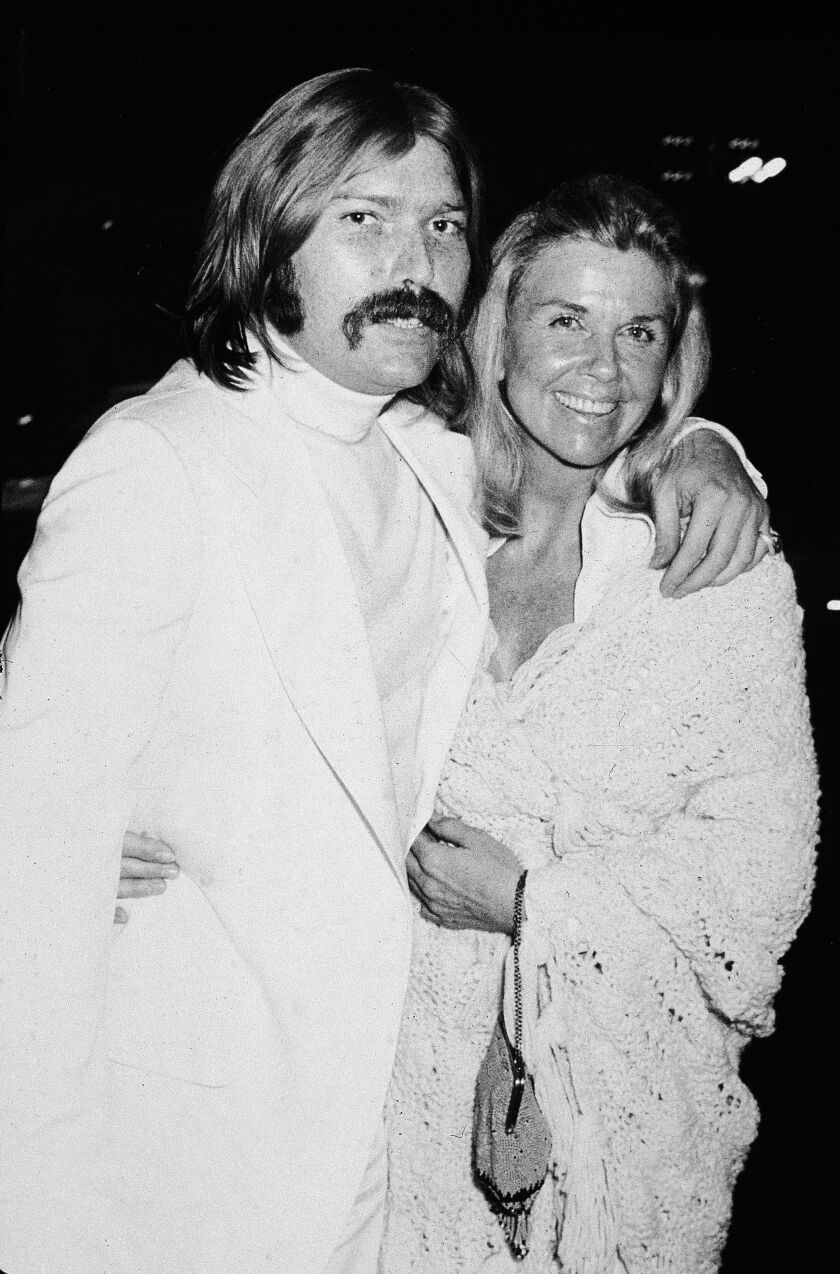Charles Manson, one of the most notorious American criminals of the 20th century, arrived in chains at Pelican Bay State Prison in California in 1997.
Manson was serving a life sentence for ordering his hippie cult followers to kill pregnant actress Sharon Tate and four others at her Los Angeles home in 1969 and, the next day, to kill a couple at another home.
Manson was familiar with Tate’s home because he’d hung out with someone who’d previously lived there, music producer Terry Melcher. Over the years, there’s been a school of thought that Manson held a grudge against Melcher that led him to orchestrate the killings.
Manson was transferred to Pelican Bay because he’d violated the rules at another penitentiary, where the worst of the worst, including Robert F. Kennedy’s assassin Sirhan Sirhan, were held.
Tod Roy, a psychologist who’d just started working at Pelican Bay, was given the job of giving Manson a psychological exam. For more than a week, Roy asked Manson questions from a battery of psychological tests. He also gave Manson the Rorschach test, getting his reactions to the various ink blots on cards.
Roy recalls that Manson was “curious,” “gregarious,” “aware of his notoriety” and mostly civil. To this day, Roy refers to Manson as “Charlie.”
But there were moments when Roy was reminded he was in the room with a cult leader. On their second day of interviews, Manson showed up with a haircut that exposed the swastika tattoo on his forehead. Another day, Manson described the car Roy owned. Through a prison window, Manson had spied Roy in the parking lot.
“That was kind of intimidating,” Roy says. “But, at the same time, it tells you about his observational capacities.”
After the evaluation, Roy gave a diagnosis that allowed Manson to get mental health treatment: “I basically said he had an antisocial personality and was a psychopath.”
Prison officials asked Roy to hand over the materials from his evaluation, but he refused.
“They were fearful that I was going to go out and publish it,” he says. “I said, ‘Well, I do because I think there’s some scientific importance here.’ ”
So they made a deal. Roy agreed not to publish anything until Manson died. Manson agreed.
After Manson died in 2017 at 83, Roy began thinking about that agreement.
“I had never written an article for a journal in my life, so I started looking into the requirements to do it, and I knew I was going to need some help,” he says.
So Roy contacted California psychologist Reid Meloy, who focuses on extremism and does risk assessments. Meloy consulted for the federal government on the prosecutions of the Oklahoma City bombers and has researched threats to the British royal family.
Intrigued by Manson’s anti-government ideology, Meloy agreed to help and started assembling a research team.
Alan Friedman, a Northwestern University psychologist, and David Nichols, an Oregon psychologist, agreed to look at Manson’s Minnesota Multiphasic Personality Inventory, known as the MMPI-2, which is based on 567 true-false questions. Using her own assessment system, psychologist Joni Mihura of the University of Toledo would re-examine Manson’s reactions to ink blots.
Now, the team of psychologists has published a paper in the Journal of Threat Assessment and Management that examines Roy’s 1997 diagnosis and finds that Manson’s symptoms were consistent with bipolar illness.
“There has always been this controversy: Was he schizophrenic?” Friedman says. “We found he was more on the manic end of the spectrum. He was an aggressive guy — antisocial, narcissistic, a psychopath.”
Manson didn’t demonstrate hallmarks of schizophrenia such as despair and feelings of alienation, according to Friedman.
Manson “was able to attract others, and that would certainly be more consistent with feelings and behaviors suggestive of grandiosity and euphoria, as distinct from the characteristics of schizophrenia, which is more despairing, alienated,” Nichols says.
Mihura studied Manson’s outlandish responses to ink blots. During the 1997 Rorschach test, the cult leader had described one image as “two Rip Van Winkles asleep” and another as “two KKK men with wings.” Many of his descriptions involved sex.
Fewer than 1% of people see the things Manson said he saw, according to Mihura, who says he didn’t seem to be faking his answers.
Mihura also watched a 1993 interview Manson did with ABC-TV’s Diane Sawyer and saw how he tried unsuccessfully to overpower her and control the interview.
“He’s very ‘plan-ful,’ ” Mihura says of the interview. “He’s trying to disrupt Diane Sawyer’s interview. His thinking wasn’t disorganized.”
Mihura determined that Manson’s Rorschach test and ABC interview showed organized thinking, so she ruled out schizophrenia. Instead, his thinking was “consistent with but not definitive” of bipolar illness, which includes the two poles of mania and depression.
She says Manson appeared to display signs of hypomania, a milder version of mania — that he seemed talkative, driven, full of energy and in control.
Also, according to Mihura, Manson was a psychopath and had “lower-level personality organization,” with difficulties showing empathy and having intimate relationships.
Manson’s mental illness most likely was triggered by his traumatic childhood, according to the psychologists’ review. During his childhood, he’d repeatedly been abandoned by his teenage mother, who was a sex worker and alcoholic.
“They say she once abandoned him for a pitcher of beer,” Roy says.
When Manson was 5, his mother was sent to prison for robbery. At 7, while in foster care, he stole a neighbor’s Christmas presents and set them on fire. He later was arrested for auto theft and robbery. When he was 13 and in juvenile detention, he was raped. He became an aggressor.
In 1967, two years before the infamous Los Angeles killings, Manson was released from a prison in Washington state. He was so accustomed to living in a state institution that he asked for permission to stay, which was denied.
“Manson had this severely adverse background, all of these things that were going on,” Friedman says. “I think today, when people have those kinds of histories, there’s more likely to be interventions done to redirect the person away from violent pathways.”
Manson didn’t physically participate in the Aug. 9, 1969, killings but orchestrated his “family” — mostly women — to carry them out. They’d been taking LSD and other drugs, which it’s believed likely lowered their inhibitions about killing.
“Manson’s specific fantasy, the ‘Helter Skelter’ fantasy, was that, by committing these atrocities that they did in Los Angeles, it would bring about the collapse of white society but that black individuals, even though they would win the race war, did not have the intelligence to govern themselves,” Meloy says. “And he would come out of the desert with his ‘family’ and rule the new society.”
Meloy says some extremist groups today are adherents of Manson’s “accelerationist” ideology.
“Acceleration is the philosophy that we promote and actually engage in violence as a way to accelerate the collapse of society,” he says.
According to Meloy, some Nazi-inspired groups are among those that believe in acceleration.
“These kinds of beliefs and patterns of thinking can arise in any mental health setting,” he says. “And we believe that clinicians need to alert themselves to these possibilities.”
The Manson study also found that “targeted attackers such as Manson will harbor a personal grievance 80% of the time. Such grievances are typically composed of major loss, humiliation, anger and blame.”
Before the killings, Manson was upset that Melcher — the music producer, who was actress-singer Doris Day’s son — refused to record songs Manson had written, according to the study, citing previous research.
Manson and his followers partied with Melcher and Beach Boys drummer Dennis Wilson in the year prior to the killings, which occurred in a Benedict Canyon home in Los Angeles that Melcher was renting until he moved out in January 1969.
Tate and her filmmaker husband Roman Polanski began renting the home that February. Polanski wasn’t home during the slaughter six months later.
Later, Manson family members said they knew Melcher no longer lived there but that Manson wanted to frighten him.
For more than 50 years, researchers have sought answers for how something so horrible could happen.
“Among terrorists, the personal grievance is usually joined with moral outrage concerning a suffering group, which is then framed by an ideology, but the severity of psychopathy in Manson would preclude any moral rectitude at all,” the study reported. “One is left with the homicidal drivers of personal grievance and his grandiose fantasy of world domination.”











